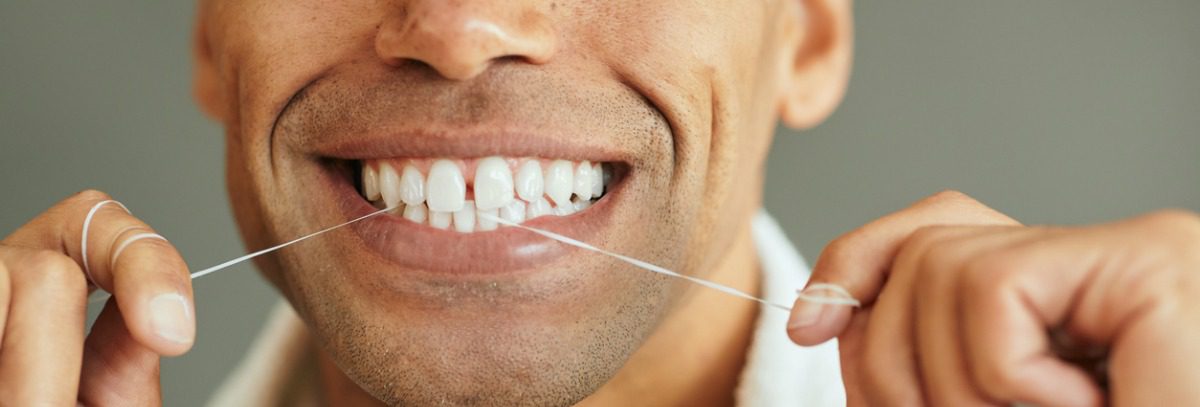Visiting your Gainesville dental clinic for twice-yearly check-ups and teeth cleanings is vital for your oral health, but so is practicing top-notch at-home dental care. Along with a proper brushing technique, flossing effectively ensures that your teeth (and the spaces between them) are free from debris, like plaque and food residue. Cleaning between your teeth daily is important to maintain good oral health. But what is the right way to floss? Read on to find out how to floss your teeth properly with this guide from our dentists in Gainesville, FL, with Comprehensive Dental Care.
Contact us today to learn more about our complete selection of Gainesville dental services and to schedule an appointment for top oral health!
Proper Flossing Technique
Flossing is an important oral hygiene habit: it cleans and dislodges food particles between your teeth and reduces bacteria and plaque in your mouth. Plaque is a sticky film residue that contributes to cavities and gum disease development. Follow these steps to help ensure you’re flossing properly.
Choose Your Floss
There are different types of floss available, so select the floss that best meets your needs for oral health. Discuss your needs with one of our Gainesville dentists, and they will be happy to provide you with a recommendation ideal for you!
Dispense The Floss
Before you brush your teeth, take about 18 inches of floss from its container. Once it’s in your hand, wind each end of the string around your middle fingers. Then, grasp 1–2 inches of the floss with your pointer finger (index finger) and thumb.
Begin Flossing
Once the floss is properly established around your middle fingers and grasped with your pointer finger and thumb, gently glide the floss in between your teeth using a sawing motion. Be careful not to cut the floss between the teeth, as this can cause gum or tooth trauma.
Angle The Floss Properly
As you move the floss between each tooth, angle it so that it hugs the tooth in a “c” shape. Gently glide the floss up and down the surface of each tooth, ensuring the floss reaches slightly below the gum line. When this is completed, angle the floss so it glides against each tooth in the opposite direction. Then, repeat this step.
Floss Between All Teeth
Continue flossing all of your upper and lower teeth, working in a clockwise direction. Begin with your upper molars (the farthest-back teeth) on the left side of your mouth and end with your lower molars on the left side. As you progress to each set of teeth, unwind the floss from your middle fingers, and then rewind it using a different section of the floss to ensure you’re working with a clean portion of floss. Once you’re finished flossing, throw out the used floss.
Brush Your Teeth
Once your flossing is completed, brush your teeth, followed by rinsing your mouth with water or mouthwash. When it comes to flossing, you can either floss before or after you brush your teeth. What matters most is to clean your teeth thoroughly every day and that you brush your teeth at least twice a day.
